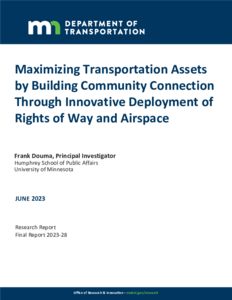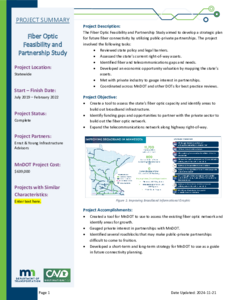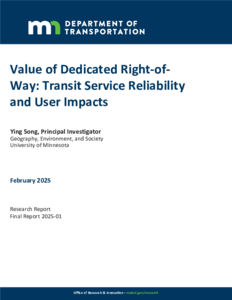Displaying results 1 - 22 of 22
Barriers to Right-of-Way Acquisition and Recommendations for Change
Date Created
2016
Report Number
2016-28
Description
Managing Utility Congestion Within Rights-of-Way
Creator
Date Created
2019-12
Report Number
2019RIC20
Description
Best Practices for Managing Utility Congestion Within Rights-of-Way
Date Created
2020-02
Report Number
2019RIC20G
Description
Appendices for Managing Utility Congestion Within Rights-of-Way
Creator
Date Created
2019-12
Report Number
2019RIC20A
Description
Project Delivery Streamlining: Design, Right-of-Way, Environmental Focus Areas: Final Report and Recommendations
Date Created
2002-02
Description
Value of Dedicated Right-of-Way: Transit Service Reliability and User Impacts
Date Created
2025-02
Report Number
2025-01
Description






















